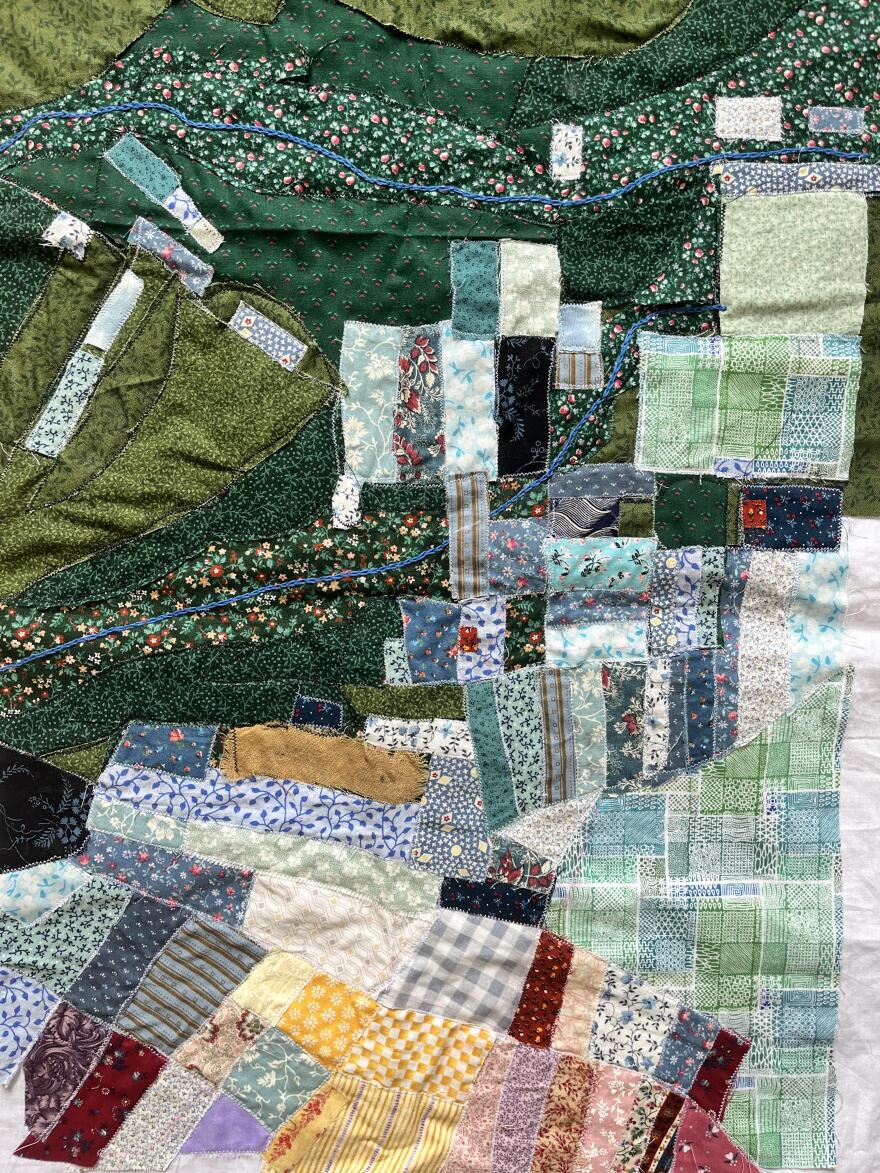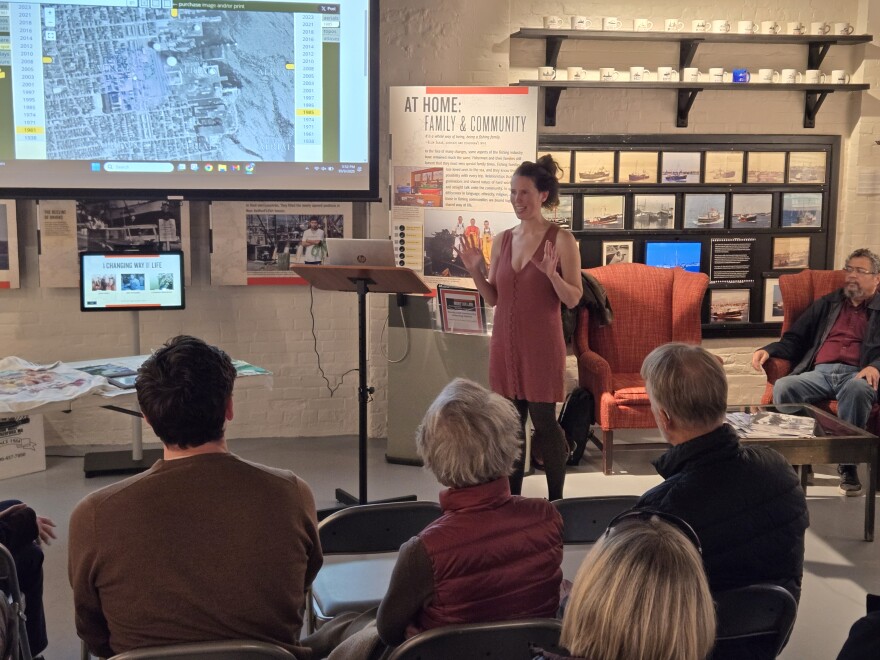Alex Houston is New Bedford Whaling National Historical Park's artist-in-residence. She's using quilting to map New Bedford's history of urban renewal.
CAI's Gilda Geist caught up with Alex recently to learn more about the artist-in-residence program and what it's been like for her so far—especially as the New Bedford Whaling National Historical Park remains closed due to the government shutdown.

Gilda Geist What made you decide to apply to be New Bedford Whaling National Historical Park's artist-in-residence?
Alex Houston I got really interested in urban renewal and was just working on this project by myself and realized to really understand urban renewal, I needed to talk to people. I needed to talk to people who were focusing on the history of it. I needed to talk to people who lived through it. And Jennifer Smith, who was the superintendent of the national park at the time, had actually done her master's thesis on urban renewal in New Bedford and mentioned this residency program to me. So, it was sort of a perfect combination of the history piece and the art piece.
GG How did you think to use quilting to convey or explore the history of urban renewal in New Bedford?
AH I had been starting to do a lot of quilts just in my free time and got really interested in art quilts. Fabric is frequently used to describe cities, like social tapestry, the fabric of the city, blocks being described as patchwork. So in thinking about how urban renewal had such a big impact in New Bedford, I thought using fabric would be a really interesting material to be able to show layers and show changes over time. Transparent fabric and ripped fabric gives me a lot of flexibility in how to show what changes have happened.
GG In the process of putting together this quilt, what are the most interesting things you've learned about the history of urban renewal in New Bedford and how it shaped the city into what it looks like today?
AH I think the most interesting thing is just how many blocks of housing and shops and churches and schools and cultural institutions existed that no longer are here today that were totally demolished in the late 60s and early 70s. They were really diverse communities—many Cape Verdeans, Jewish, Polish, French Canadian and Portuguese people living together. Some of the houses were not in the best condition on the exterior, but many of them housed hundreds of families and individuals, and it's where people lived and spent their lives. As I drive down Route 18 going very fast, I now sort of see the ghosts of these buildings and of these families and children that once lived and worked there. It was this decade of intense demolition to make way for parking lots, roadways, highways and the fishing industry. They really cut New Bedford's downtown off from the waterfront and built a really busy roadway in between. People were displaced. So, it really dispersed the community throughout not just New Bedford, but the whole region.

GG What has it been like so far being artist-in residence?
AH It's been interesting because my residency started on October 1, which was the same day the government shut down. So while the doors to the national park welcome center were closed, there are a group of nonprofits that are really closely connected with the park and are helping with the residency that came together and really helped me figure out how to make this residency work without a studio space to be fully based out of in the national park. So UMass Dartmouth College of Visual and Performing Arts, DATMA [Massachusetts Design, Art and Technology Institute] and New Bedford Creative all helped. And I really appreciate everyone figuring out how to make this work despite the shutdown.
GG What advice would you give to other artists who are maybe thinking about applying to be in your position next year?
AH Think about how your art ties to place. I think that's the real benefit of the artist-in residence program, is being really a part of this network in New Bedford of nonprofits and historical organizations and the history of the city. Everyone I've met who's done the residency here has done something totally different and interesting. The last artist in residence was using rope. The one before that was making incredible textile sculptures. There are people who have woven together waste that's washed up on the shore. There are so many fascinating projects that have come through.
New Bedford Creative is now accepting applications to be artist-in-residence at the New Bedford Whaling National Historical Park in 2026. Applications are due December 1 at 11:59 PM. To apply, visit https://nbedc.submittable.com/submit.
Alex will showcase her finished quilt on December 11. Further details TBA.








